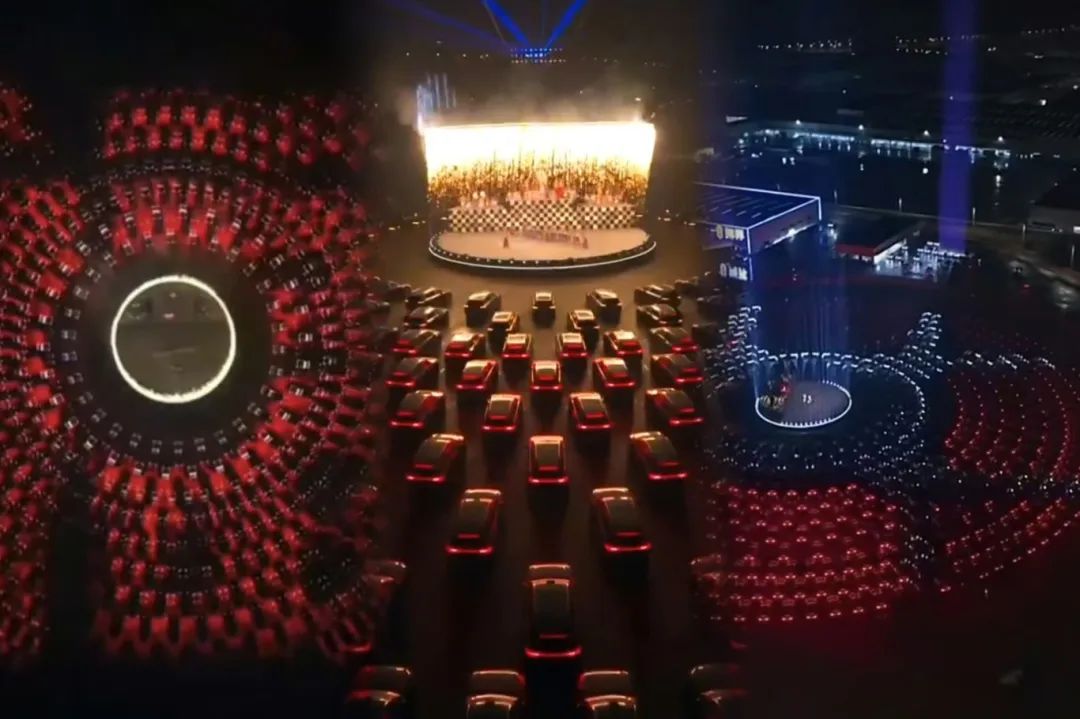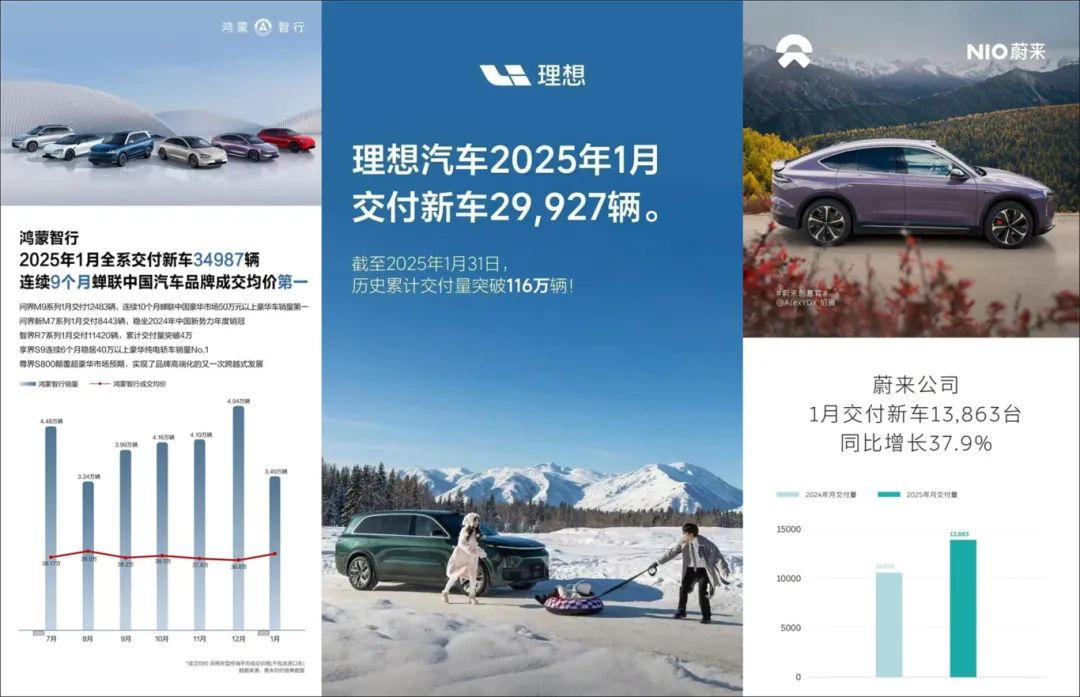New Year's Address | Blooming Like a Winter Jasmine, Despite the Crevice
![]() 02/05 2025
02/05 2025
![]() 458
458

Introduction
As China's auto industry evolves from a participant in global division of labor based on scale and manufacturing to a leader and innovator in new technologies, the established patterns and distributions of the automotive sector, cemented over 140 years, are poised for disruption. In this new equilibrium, China will undoubtedly occupy a significant and unprecedented position.
2025 marks the sixth year of China's leadership in the comprehensive electrification and intelligence of the automotive industry, and the third year of intense internal competition within the auto market.
In Chinese culture, "three" holds mystical significance. For Laozi, "Three gives birth to all things." For rationalists, it signifies a limit and turning point, indicating that everything has its bounds. As 2025 draws to a close, will it bring sudden clarity or a continuation of arduous struggles? We must patiently wait over 300 days to find out.
Yet, the auto market's competitive fervor persisted even during the Spring Festival. During the 2025 Spring Festival Gala of the Year of the Snake, seven automotive brands and six models debuted—Zunjie S800, Wenjie M9, Qiyuan Q07, Xiaomi SU7, Shenlan S09. These unfamiliar names will be the protagonists of this year's tumultuous auto market battle.
On February 2, three leading automakers announced their January sales figures. Geely Auto led the way with a record-high monthly sales volume of 266,700 units, a 24.9% increase year-on-year. Subsequently, BYD and Chery reported sales volumes of 300,500 units and 224,300 units, respectively, for the same month.

Details and numbers matter. Despite manipulated sales figures in December 2024 and January 2025, the top three enterprises' monthly sales volumes are unprecedentedly close. Notably, Geely's domestic sales volume is still 5,742 units higher than BYD's. As mentioned in Auto Commune's year-end special edition, "2025 Pattern and Trend (Middle): Three Men, Two Plays," since the beginning of 2025, these three leaders have been engaged in relentless competition across China.
Hongmeng Zhixing, XPeng, Li Auto, and NIO also swiftly updated their January sales figures, revealing a ranking markedly different from the past. Hongmeng Zhixing topped the chart, with XPeng replacing NIO and Li Auto. Geely Galaxy surpassed 100,000 units, marking significant changes with immense momentum.
FAW-Volkswagen, a prominent joint venture automaker, announced robust retail sales of 144,000 units in January. However, behind its confidence lies the sorrow of many other joint ventures experiencing steep declines. As the Gospel of Matthew states, "To him who has, more will be given, and he will have an abundance; but from him who has not, even what he has will be taken away." In 2025, the Matthew Effect is accelerating in the auto market, from joint ventures to independent brands, with the strong becoming stronger and the weak singing a lament throughout the year.
While the trend is set, the journey is bound to be turbulent. Price wars have drastically reduced industry profitability, causing dealers and suppliers to incur substantial losses. Fatigue and burden have become the norm. In 2024, the auto industry generated a revenue of 10,647 billion yuan, up 4% year-on-year, but profit declined by 8% to 462.3 billion yuan. The auto industry's profit rate stood at 4.3%, falling below the overall industrial profit rate for three consecutive years.

The primary contradiction in the current auto market lies in the widening gap between policy support enthusiasm and declining consumer purchasing power. With slowing income growth, shrinking household wealth, and weak consumer expectations, the lack of momentum in auto consumption remains unresolved in the short term. Amid the dilemma of "wanting to compete but fearing failure," 16 million auto industry workers embark on a new year filled with uncertainty and anticipation.
During the Spring Festival, DeepSeek emerged as a focal point in the Sino-US technology war, symbolizing a turning point that reverses China's lagging position in the AI competition. In the automotive industry, 2025 will bring new answers regarding the solid-state battery revolution that will reshape the future of power batteries and the FSD era that will determine the competition in autonomous driving capabilities—but China's victory is not yet complete!
The 1930 book "Technology and Civilization" posits that "technology embodies human nature." Over 140 years, the automobile has vividly illustrated the interplay between technology and human nature. From ancient times to the present, from agricultural civilization to mechanical civilization, and then to information civilization, technology has driven every era's transformation. Previously, Chinese manufacturing largely participated in the low-value chain of global division of labor. In the AI era, the competition for intelligence has propelled the automobile to the forefront.
As China's auto industry transitions from a participant in global division of labor based on scale and manufacturing to a leader and innovator in new technologies, the established patterns and distributions of the automotive sector, solidified over 140 years, are set to be disrupted. In this new equilibrium, China will undoubtedly occupy a significant and unprecedented position.

Global turmoil is accelerating this transition. On February 1, President Trump announced the initiation of a tariff war against China, Mexico, and Canada, followed by tariff threats against Japan and the European Union, signaling the imminent outbreak of a global economic war. The automobile is entering a new, uncharted world that the West has not traversed in 140 years. This is China's auto industry's only path to break through blockades, encirclement, and emerge stronger—a journey fraught with challenges, devoid of applause, and mentally and physically exhausting for all.
As I pen this New Year's address, spring has just begun. "Spring" is a warm word that fills hearts with joy and anticipation. On this day, my friends' circle showcased not only the bougainvillea gently swaying in the breeze in Sanya, southern China, and along the Thai coast but also the plum blossoms blooming in the cold wind in Osaka Castle Park, Japan.
In Chinese cultural heritage, no matter how harsh the winter, people always seek the tender green sprouts filled with hope emerging from the cracks in the frozen soil. Misfortune may precede good fortune, and amidst confusion and despair, hope takes root and blossoms.
Therefore, just as you have witnessed the dazzling sunrise over Dameisha in Pingshan and seen the brightest stars in the Wuhu night sky, like the winter jasmine blooming in Hangzhou Bay, even if trapped in a crevice, you must grow tenaciously and shine under pressure.








